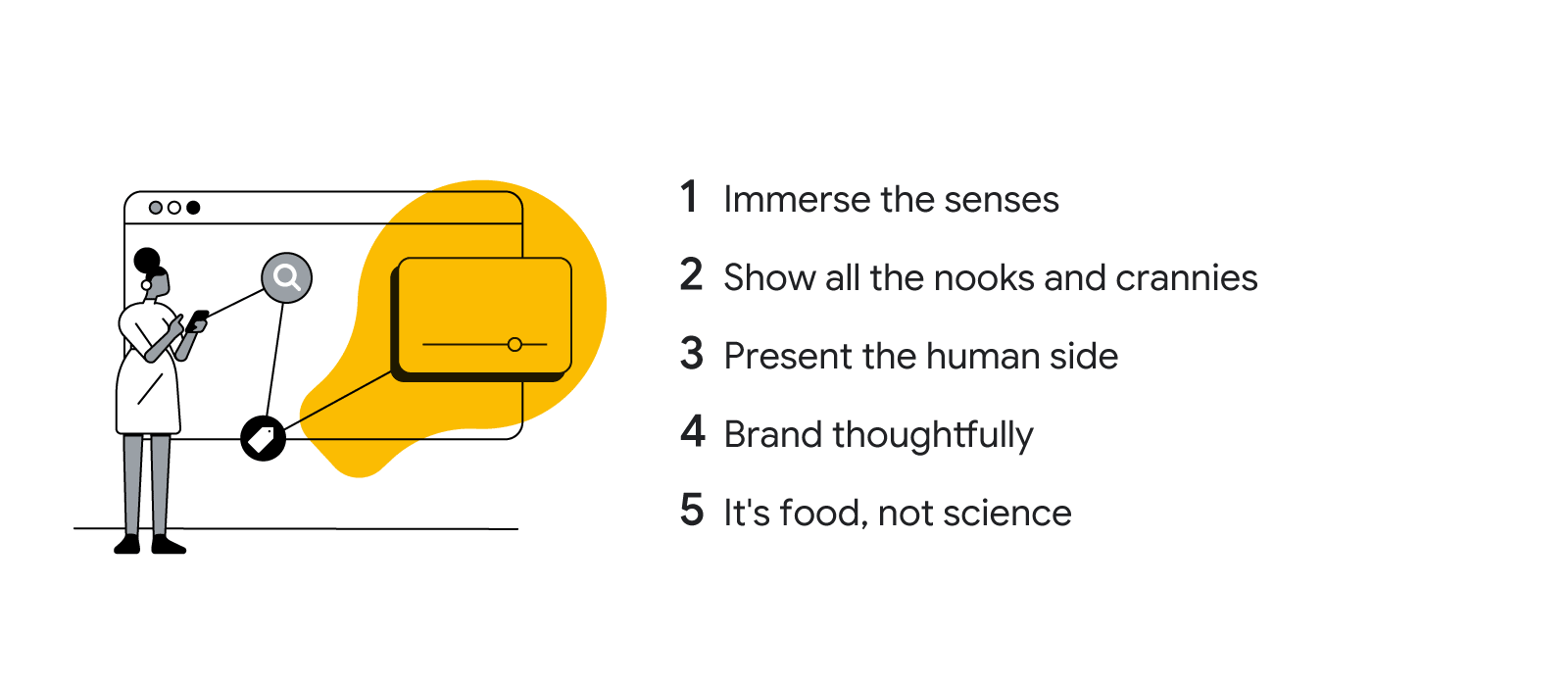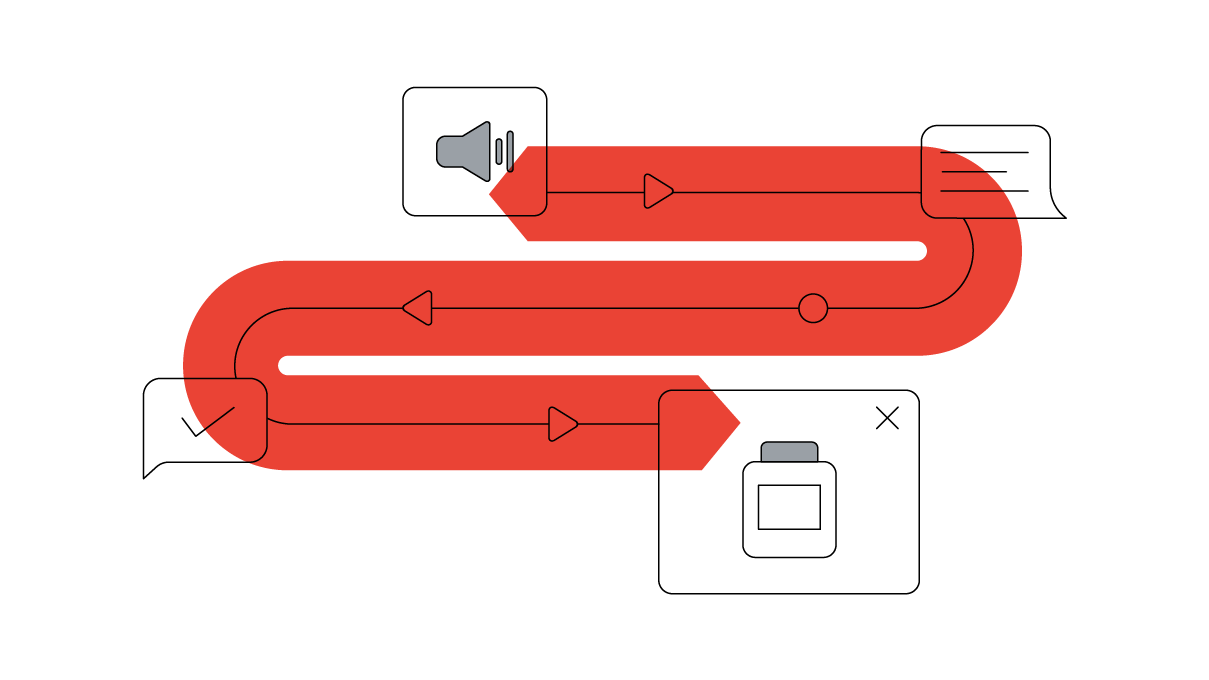Noël Paasch, creative director at Google’s Creative Works, leads brand and agency partnerships to determine best practices in advertising on YouTube. Here, she shares results from over two years of research to better understand the effectiveness of food, beverage, and restaurant video ads. Pei Ling Ho, global creative director at Creative Works, provides additional APAC insights.
Should your opening shot feature a satisfied customer enjoying your product mid-bite? Should it set the scene, steadily leading up to the product reveal?
When it comes to creative decisions for video ads, it can sometimes be challenging to distinguish pure aesthetics from what drives results. Without hard data, it’s impossible to understand the psychology behind viewers’ responses.
Our ABCDs for creative effectiveness are data-informed, tested guidelines that can be applied universally to any video ad. In fact, Nielsen found that food, beverage, and restaurant ads that closely followed the ABCDs saw, on average, 31% higher sales lift.1 Supported by third-party research, our team recently conducted additional analyses to uncover more actionable creative insights around food ads. Here’s what we found.

1. Immerse the senses
The experience of food is so much more than just its taste. A chocolate chip cookie is just as much its salty-sweet, fresh-from-the-oven smell, iconic craggy texture, and gooey chocolate melting on your fingers as it is its flavor. Our analysis shows that you can engage both sight and sound to make up for the lack of other sensory details.
KitKat Korea hit all the right notes with its series of ASMR video ads. The rustle of the iconic red packaging as it’s unwrapped and the sharp snap of the chocolate bar breaking in half to reveal its waffle center. These aural details elevate the experience of online videos, and people in Korea have lapped up the brand's videos, which show off its variety of chocolate flavors.
2. Show all the nooks and crannies
It goes without saying that texture plays a big role in the characterization of any food. Would fresh pizza be as appealing without its gooey cheese or soft, bready crust?
Research shows that the majority of viewers watch ads on their mobile devices, so conveying the full visual through close-up shots of the product is extra important. Clear, crisp visuals help to communicate the product benefit quickly. This is generally good advice for any vertical on YouTube, but especially for food, beverage, and restaurant brands.

Pizza Hut Thailand used this technique in ads for its latest cheesy pizza creations. Viewers are treated to delicious close-ups of bubbling, melting cheese on a crispy crust, and gooey cheese stretching seductively as slices are pulled from the pie. These vivid details make viewers feel like the pizza is right in front of them, ready for them to sink their teeth into the slices.
3. Present the human side
Of course, there’s only so much one ad can show of the product itself. With limited time, shorter-form ads are perfect for focusing solely on the product, but studies show that long-form ads are more effective when they incorporate a human story. Introducing a human element adds context and makes it easier for the viewer to relate.
Our analysis also shows that various scenarios can perform equally well for food ads, including placing ingredients at the forefront, and pushing the boundaries of creative expression to drive appetite appeal.
McDonald’s Singapore launched its Hokkaido salmon burger with a combination of short- and long-form ads that depict different scenarios. Its six-second ad focuses solely on the burger, with close-ups of the steaming salmon patty. The 10-second and 30-second versions used a blend of live action and anime to offer viewers a mental escape to a diner in Hokkaido and emphasize the transporting appeal of its burger.
Try experimenting with varied ad lengths and creative executions to see what performs best with your brand and audiences.
4. Brand thoughtfully
If you’re looking to increase your sales lift, the memorability of your brand is as important as the food itself. And when it comes to brand expression, you should pull out all the stops.
Our research shows that relying on a logo endcard might not be doing the most work for you. To make a lasting impression, think about seamlessly incorporating it throughout the ad, complemented by audio mentions, large type supers, and distinctive brand assets like mascots, brand colors, and mnemonics.
KFC Taiwan went all out to integrate its brand prominently in a 30-second ad that incorporates sight, sound, color, and design in fun, unique and unexpected ways. The more your brand or product appears in an ad spot, the more likely viewers are to remember it.
5. It’s food, not science
Lastly, remember that the average viewer’s brain can only retain so much information from any given ad. So when it comes to copy, our data supports using clear, accessible language.
For example, try describing the benefit instead of the ingredient. Milo gives busy people a reason to take breakfast on the go by showcasing how its product helps active people fuel their everyday tasks.
Armed with these five insights, your team can measurably increase creative effectiveness, making your products, and your bottom line, even more appetizing. Still, the best way to determine which creative practices support your goals, from awareness to conversion, is to experiment with your own ads and test them yourself.








